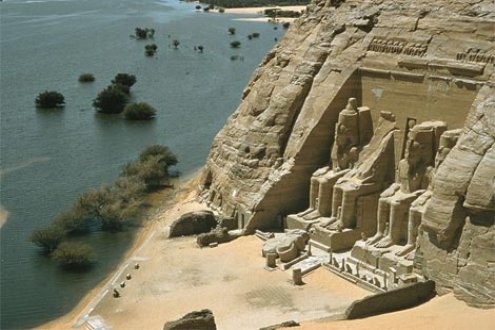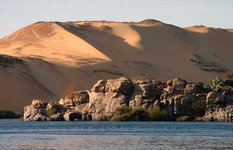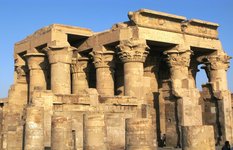 Been there
Been there
 Want to go
Want to go
 Ask friends for recommendations
Ask friends for recommendations
Things to do
Attractions and sights
 View Map
View Map
-
Luxor has frequently been characterized as the "world's greatest open air museum", as the ruins of the temple complexes at Karnak and Luxor, long buried beneath desert sands, stand within the modern city. Immediately opposite, across the River Nile, lie the monuments, temples and tombs on the West Bank Necropolis, which include the Valley of the Kings and Valley of the Queens. Also see Medinet Habu, the Mortuary Temple of Rameses III.

-
The Mortuary Temple of Queen Hatshepsut is located on the west bank of the Nile near the Valley of the Kings in Egypt. The mortuary temple is dedicated to the sun god Amon-Ra and is located next to the mortuary temple of Mentuhotep II, which served both as an inspiration, and later, a quarry.

-
Edfu is the site of the Ptolemaic Temple of Horus, built between 237 BC and 57 BC, into the reign of Cleopatra VII. Of all the temple remains in Egypt, it is the most completely preserved. Next to the temple is the ancient mound of Tell Edfu; it contains complete archaeological sequences of occupation dating to the Old Kingdom until the Graeco-Roman period, more than 3000 years of history. About 5 km (3 mi) north of Edfu are remains of ancient pyramids.

-
The Temple of Kom Ombo is an unusual double temple built during the Ptolemaic dynasty (180- 50 BC). The building is unique because its 'double' design meant that there were courts, halls, sanctuaries and rooms duplicated for two sets of gods. The southern half of the temple was dedicated to the crocodile god Sobek, god of fertility and creator of the world with Hathor and Khonsu. Meanwhile, the northern part of the temple was dedicated to the falcon god Haroeris, also known as Horus the Elder, along "with Tasenetnofret (the Good Sister, a special form of Hathor) and Panebtawy (Lord of the Two Lands).

-
Aswan has a distinctively African atmosphere. Small enough to walk around and graced with the most beautiful setting on the Nile, the pace of life is slow and relaxing. Days can be spent strolling up and down the broad Corniche watching the sailboats etch the sky with their tall masts or sitting in floating restaurants listening to Nubian music and eating freshly caught fish. See elegant Nubian Philae temple, dedicated to Isis, rescued from the rising waters. The Temple of Kalabsha honors the androgynous Nubian sky and sun god Mandulis. The Nubia Museum displays treasures salvaged from temples and monuments flooded by the controversial Aswan dam, also in town.

-
Two massive temples were originally carved out of the mountainside during the reign of Pharaoh Ramesses II in the 13th century BCE, as a lasting monument to himself and his queen Nefertari, to commemorate his alleged victory at the Battle of Kadesh. However, the complex was relocated in its entirety in 1968, on an artificial hill made from a domed structure, high above the Aswan High Dam reservoir, to avoid being flooded.

-
Kasr Ibrim fortress, partly built "in Roman times was originally a pharaonic site with material from the New Kingdom. A small but interesting Nubian Amada Temple houses a collection of brightly painted historical carvings.

-
Wadi el Seboua ("Valley of the Lions") is a striking avenue lined with sphinxes. шThe temple of Dakka,щ en.wikipedia.org/wiki/Temple_of_Dakka dedicated to the ibis-headed Thoth, and the Greco-Roman temple of Meharakka, are both located at the Wadi el Seboua temple complex

More attractions
 Hide Map
Hide Map
When to go
| |||||||||||||||||||||||||||||||||||||||||||||||||||||||||||
How to get there
The cruise is from Luxor to Aswan (125 km), often extended to Abu Simbel. Many tours, however, originate in Cairo, and include a flight to Luxor. Aswan to Abu Simbel is sometimes also by air.
Nearby destinations:
Pyramids of Giza
Sharm-Al-Sheikh & Dahab
Tel Aviv & Jerusalem
Hurghada
Petra
Dead Sea & Masada
Cyprus
Reviews

























